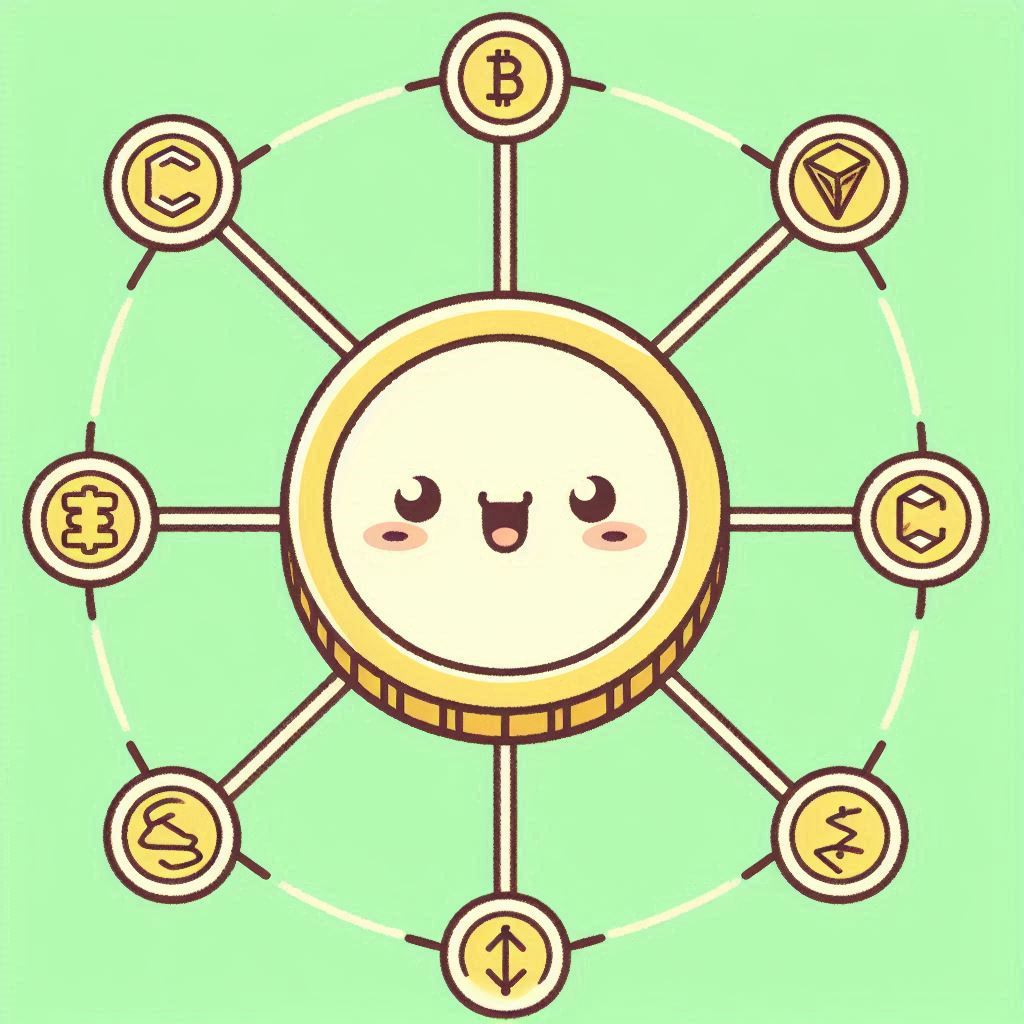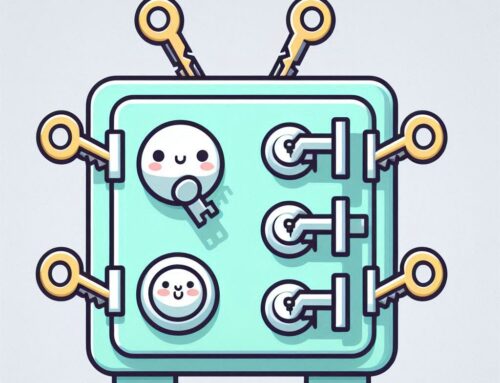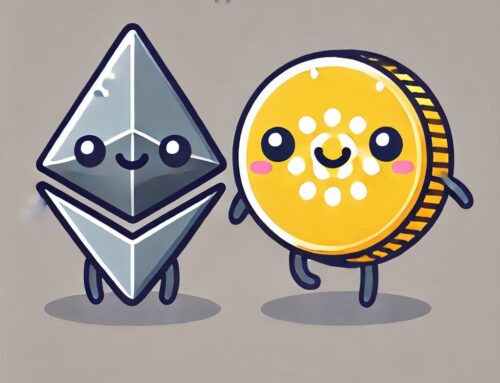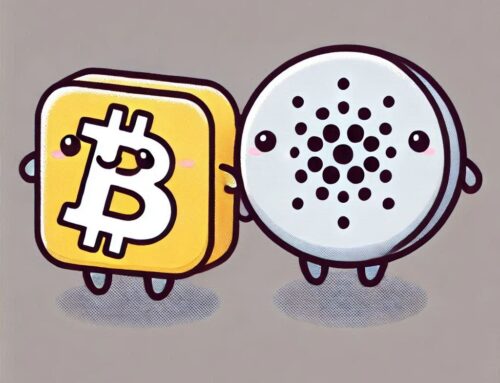Building Bridges, Not Walls: A Look at Cardano Interoperability (Because Blockchains Shouldn’t Be Lonely Islands!)
Alright, visionary techies, it’s time to grab your hard hats and join us on a construction site of epic proportions – we’re building bridges, not walls, as we delve into Cardano interoperability! No, we’re not talking about erecting physical bridges, we’re talking about connecting different blockchains to create a more seamless and collaborative digital world, where information and assets can flow freely between different networks, expanding the capabilities of everyone.
Think of it like creating a universal translator for blockchains, allowing them to understand each other, share information, and work together to solve complex problems. The emphasis on Cardano interoperability is going to greatly increase the number of possible applications, and will allow it to achieve long term growth. So, let’s dive into Cardano’s ambitious plans for sidechains and interoperability, with a dash of humor, and a whole lot of clarity!
The Challenge: A World of Blockchain Islands (Disconnected and Lonely!)
Before we start building bridges and singing Kumbaya, let’s acknowledge the current reality of the blockchain landscape: most blockchains operate in isolation, creating a fragmented and inefficient ecosystem, and preventing them from achieving their full potential.
-
Data Silos (Information Prisons!): This isolation creates silos of data, where information and assets cannot move freely between different networks, which means that it’s difficult to build applications that rely on data from different sources. It’s like having multiple walled gardens, that are all separate and don’t have any ways to communicate with each other, which makes progress very slow.
-
Limited Use Cases (Cramping Creativity!): The lack of interoperability limits the potential use cases for blockchain technology, as many applications require the ability to access data and assets from multiple networks. It’s like having a smartphone that can only connect to one specific brand of headphones, which limits its usefulness. This makes Cardano interoperability essential for long term success.
Cardano’s Vision: A Web of Interconnected Blockchains (Where Everyone Plays Nice!)
Cardano is designed with interoperability in mind, aiming to create a more connected and collaborative blockchain ecosystem, where different networks can interact seamlessly. It’s not about creating a single, all-encompassing blockchain that rules them all; it’s about building a system where different blockchains can work together, and leverage each other’s strengths.
-
Seamless Transfers (Breaking Down the Walls!): Cardano aims to facilitate seamless transfers of data and assets between different blockchains, which will help create a more fluid and efficient system. The goal of Cardano interoperability is to create a system where users can move funds easily, without needing to jump through all kinds of hoops.
-
Collaboration and Innovation (Better Together!): The focus is on collaboration, encouraging innovation and the development of cross-chain solutions, that leverage different platforms and skillsets, to build something truly special, creating new opportunities for everyone involved. The benefits of Cardano interoperability are far-reaching, and will benefit the entire space.
-
A Blockchain Web (The Future is Connected!): Cardano envisions a future where different blockchains are interconnected, functioning as part of a web of networks, that are all able to communicate and interact seamlessly, for the betterment of all. This will help bring about a future where blockchain is integrated into everyday life.
Sidechains: Expanding Horizons and Capabilities (Like Adding Extra Wings to a Building!)
Sidechains are independent blockchains that are connected to the main Cardano blockchain, offering increased scalability, flexibility, and opportunities for experimentation. Think of it like adding modular extensions to a house, increasing the overall size and functionality. These modular extensions can be used to enhance Cardano interoperability, and increase its utility for everyday use.
-
Parallel Processing (Doing More at Once!): Sidechains allow for parallel processing of transactions, which greatly increases the throughput of the network and prevents bottlenecks on the main chain, and improves its overall performance.
-
Customizable Environments (Tailoring the Solution!): Sidechains can be customized to support different use cases and functionalities, allowing developers to create specialized solutions for their specific needs.
-
Innovation and Experimentation (A Safe Space to Play!): Sidechains provide a safe space for innovation, as developers can experiment with new technologies and features without affecting the main Cardano network, making it easier to test out new ideas.
-
Increased Scalability (Handling the Growing Demand!): Sidechains allow the network to scale to meet the needs of a growing number of users and applications, which is an essential component for mass adoption, and it’s one of the key focuses for the Cardano team.
How Sidechains Work on Cardano: A Simplified View (Connecting the Dots!)
Here’s a simplified view of how sidechains are designed to function within the Cardano ecosystem, to better understand the role that they play:
-
Connection to the Main Chain (Building the Bridge!): A sidechain is connected to the main Cardano blockchain through a secure and reliable bridge, that allows assets to be transferred back and forth.
-
Two-Way Transfers (Sharing the Resources!): The bridge allows for seamless transfers of assets between the main chain and the sidechain, allowing users to move funds between the different networks.
-
Independent Processing (Handling the Workload!): Transactions are processed on the sidechain, which is its own separate network, without impacting the main Cardano network, reducing the load on the main chain.
-
Periodic Updates (Reporting Back to Base!): The sidechain periodically updates the main chain, reporting its state and any transactions that need to be recorded on the main network, which ensures that the main network remains secure.
The Potential Benefits of Cardano Interoperability: Expanding Horizons
Cardano interoperability, and connecting with other blockchains can provide several key benefits, for both the Cardano community, and for the entire blockchain world:
-
Increased Functionality (More Tools in the Toolbox!): By connecting to other blockchains, Cardano can access new functionalities and capabilities that may not exist on its own network, which allows it to expand its own potential and give its users access to all kinds of new services.
-
Greater Liquidity (More Trading Opportunities!): Cardano interoperability can increase liquidity for Cardano-based assets by allowing them to be traded on multiple platforms, leading to greater access and better prices for everyone.
-
Cross-Chain Applications (The Best of Both Worlds!): Interoperability enables the development of cross-chain applications, where different blockchains work together to provide a more versatile and innovative user experience, combining the strengths of various ecosystems.
-
Enhanced Innovation (A Hotbed of Creativity!): Cardano interoperability promotes innovation by allowing developers to leverage the strengths of different blockchains, and experiment with new and exciting technologies. This creates a more dynamic and innovative development environment.
-
Wider Adoption (Bringing More People In!): Interoperability can lead to wider adoption of blockchain technology, as different platforms become more interconnected and usable, making it easier for new users to join.
The Takeaway: Cardano is Building a Bridge to the Future!
Cardano’s plans for sidechains and interoperability are not just a technical detail; they are a cornerstone of the project’s long-term vision for a truly interconnected and collaborative blockchain ecosystem. By connecting to other blockchains, Cardano will be able to unlock new possibilities, and build a more robust and user-friendly digital world. It’s not just about building a great blockchain; it’s about building a bridge to the future, where different blockchains can work together seamlessly and securely.





